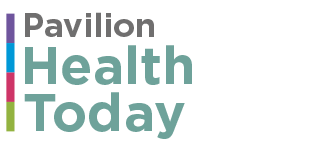Pavilion Publishing and Media Ltd
Blue Sky Offices Shoreham, 25 Cecil Pashley Way, Shoreham-by-Sea, West Sussex, BN43 5FF, UNITED KINGDOM
General practice teams have been praised in a new report from the National Audit Office (NAO) that found GPs and community pharmacies administered the majority of Covid-19 vaccines.
NHS England and NHS Improvement set up three main routes to access vaccines: GPs and community pharmacies (which it assumed would provide 56% of vaccinations); vaccination centres (which it assumed would provide 41%) and hospitals (for the remaining 3%).
By the end of October, 71% of vaccines had been administered by GPs and community pharmacies, through a variety of local services and locations, and only 21% had been delivered at vaccination centres.
GPs and community pharmacies were the most popular delivery model for all priority groups although people aged under 65 were more likely than others to use dedicated vaccination centres.
The Royal College of GPs said GPs and their teams, working with colleagues across the health service, pulled out all the stops to ensure as many people as possible are protected from Covid-19, and it’s good to see this being recognised by the NAO report.
Success of vaccine rollout was due to dedication of GP teams
Dr Gary Howsam, Vice Chair of the Royal College of GPs, said: “The vaccine rollout was the biggest and most complex vaccination programme in UK history. It also ran alongside two expanded flu vaccination programmes. Its success has in a large part been down to the experience, hard work and dedication of GP teams, delivering vaccinations at a local level, with the majority of vaccinations delivered in primary care.
“It’s a fantastic achievement that so many people have been vaccinated, with uptake exceeding initial planning assumptions – and this report does not take into account the booster programme, which has now seen more than 38m patients fully protected from the virus. It remains crucial that patients continue to get as much protection as possible so that we can move from a pandemic to an endemic Covid situation and GP teams will remain key to this effort.”
The NAO report evaluates the government’s Covid-19 vaccine programme focusing on events up to the end of October 2021 and assessing whether the programme is well placed to meet its objectives in full.
It focused on England, with the exception of procurement which the government has done on a UK-wide basis. We describe aspects of clinical advice, vaccine certification, the booster programme and some events after October 2021 but do not evaluate them in depth.
Authors said that the vaccine rollout was the biggest and most complex vaccination programme in UK history and met stretching and unprecedented targets, helping to save lives and reduce serious illness and hospitalisation.
Given the unprecedented circumstances of the pandemic and the programme’s achievements up to October 2021, today’s NAO report finds that it has been an effective use of public money to this date.
The amount of vaccines supplied but not used (wastage) was also lower than the programme initially assumed: the NAO estimated that wastage for England, as at the end of October 2021, was around 4.6 million doses, or 4% of total supply. There was a particular challenge with expiring AstraZeneca doses after the JCVI’s recommendation that people under 40 should preferably not be offered it. This meant that about 1.9 million doses delivered to local sites had to be written off.
It added that there are now risks to the programme’s continuing success that must be managed. Staffing issues, including burnout, and a lack of surplus capacity in the healthcare system present substantial risks in a context where there are still around 3.7 million unvaccinated adults.
GPs delivered more standard appointments last month
The BMA said that GPs are working harder than ever with a finite number of resources according to the latest GP appointment data for England.
Dr Kieran Sharrock, BMA England GP committee deputy chair, said: “Month on month, appointment figures continue to highlight the ever-increasing demand on GPs and their teams, as they continually go above and beyond for their communities, delivering more standard appointments last month than in December (from 25.2 million to 25.7 million).
“As well as delivering routine appointments, we are still caring for those with Covid, supporting the vulnerable, and working through the enormous backlog of care that’s built up during the pandemic. What’s more, the majority of our appointments remain face-to-face (60%) – something GPs often prefer.”
He added that demand has not diminished – quite the opposite – and GPs and their teams are at serious risk of burnout, with many already-exhausted colleagues feeling as though they have no choice but to leave a profession they love because of the current pressures.
“The number of staff available limits what activity can be delivered in general practice. This way of working is unsafe, everyday GPs and their teams are shoring up more appointments than they can safely accommodate, this has an impact in patient safety terms. The waiting list in general practice will only keep growing, a radical approach is necessary to address staff shortages, unbalanced investment and misaligned incentives,” he added.


